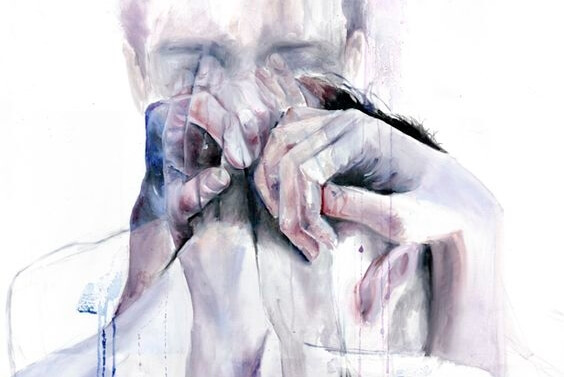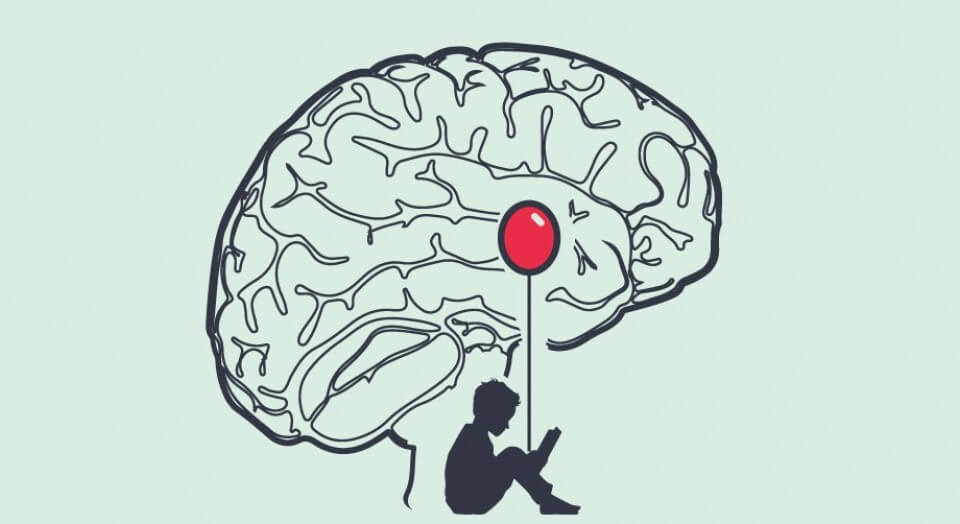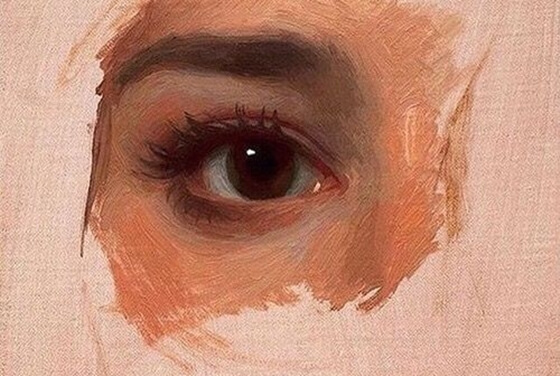Free Floating Anxiety: A Facet of GAD


Written and verified by the psychologist Valeria Sabater
I’m not afraid of anything in particular, but really…I’m afraid of everything. That’s what free floating anxiety is like – it’s the uncertainty that lurks in the shadows and then traps you, that takes away your breath and your will to leave the house. It’s like living in solitary confinement, in a room without windows. It’s a constant spiral of worry, an asphyxiating ball of desperation.
In her diaries, Virginia Woolf said that life is like a dream, and waking up is what kills you. It’s as if somehow, there’s a defining moment in your existence where you wake up and open your eyes to all the responsibilities and weight of life, all the unstoppable urban movement, all the discordant noise of human relationships. It feels like all that movement not only overtakes you, but it makes you smaller.
“Fear is always ready to see things as worse than what they really are.”
Of course, everybody wakes up to life and discovers that sometimes it’s painful and difficult. But thousands of men and women experience something much more complicated than that. It’s a diffuse, formless fear that traps you in a behavioral pattern of excessive and recurring worry over almost anything.
This emotional state of growing uncertainty and chronic stress gives rise to free floating anxiety, which is a part of generalized anxiety disorder (GAD). This reality is as exhausting as it is complex, because in contrast to other disorders, the preoccupation and reactions associated with free floating anxiety are not focused on anything in particular; rather, they’re all-encompassing.
GAD can be summed up in a simple yet powerful sentence: “I’m always thinking that something bad is going to happen to me.”

Free floating anxiety and irrational fear
Adrian is 35 years old. After a 10-year relationship with a woman, she abandoned him. She fell in love with another person, and while our protagonist appeared to be okay, the people close to him started to notice a few unsettling things. While it’s true that Adrian has always been somewhat anxious, after the breakup he started obsessing over various things, including the health of his parents. He started fearing they would get sick and die.
His coworkers have also noted a few strange things. Adrian is an architect, and for a while now he’s been obsessing over making mistakes. He worries excessively over whether he’s doing his job well or not, and whether something bad might happen under his watch. He’s also afraid of not being able to pay his mortgage, and is already anticipating which expenses he should cut back on in case something were to happen. But nothing has actually happened yet.
We used this imaginary man as an example for a reason. It is estimated that GAD, and the associated free floating anxiety that infiltrates almost every aspect of life, affects women more than men. However, of the almost 60% of those affected who don’t receive treatment or even seek help, most of them are men.

A Simple Technique to Ease Stress: Jacobson’s Progressive Muscle Relaxation
Why does everything worry me?
In order to understand GAD and the related free floating anxiety a little better, we must first understand the function of fear: to prepare us to react to a threat. It’s a fine-tuned, exceptional adaptation mechanism that allows us to survive. That is, unless the fear you feel is not provoked by a real threat.
What if the fear and anxiety starts to invade every part of your life? What happens is you get stranded in a parallel universe equivalent to your worst nightmare. Because there’s nothing worse than living in fear.
Possible causes
Many scientists and neuropsychiatrists are certain that GAD is different from any other disorder. The Stanford University School of Medicine explains that free floating anxiety is caused by dysfunction in various parts of the brain, including the amygdala.
The amygdala is an almond-sized structure that mediates our emotions, memories, and perception. At some point, for unknown reasons, the circuits that make up this region are altered, and with that, the order and balance of the person’s life.

Treatments of GAD
Two main approaches are necessary to address this clinical condition: medication and psychotherapy. Medication can reduce the symptoms and create the necessary conditions for psychotherapy to be more effective.
“There is no actual stress or anxiety in the world, your thoughts create these false beliefs.”
-Wayne Dyer-
Selective serotonin reuptake inhibitors (SSRIs) are generally used, but other antidepressants are also often necessary. Remember, each patient is unique and their personal reality might demand an equally unique treatment.

In addition, cognitive-behavioral therapy and other therapies focused on stress management are effective in reducing the excessive preoccupation associated with free floating anxiety. In those therapies, the patient learns effective confrontation strategies and develops healthier and more adaptive behaviors.
Lastly, it’s worth noting that proper nutrition, exercise, and meditation are complementary tools that can help you dominate fear, focus your attention on what’s really important, and learn how to think and live better.
Images courtesy of Agnes Cecile
I’m not afraid of anything in particular, but really…I’m afraid of everything. That’s what free floating anxiety is like – it’s the uncertainty that lurks in the shadows and then traps you, that takes away your breath and your will to leave the house. It’s like living in solitary confinement, in a room without windows. It’s a constant spiral of worry, an asphyxiating ball of desperation.
In her diaries, Virginia Woolf said that life is like a dream, and waking up is what kills you. It’s as if somehow, there’s a defining moment in your existence where you wake up and open your eyes to all the responsibilities and weight of life, all the unstoppable urban movement, all the discordant noise of human relationships. It feels like all that movement not only overtakes you, but it makes you smaller.
“Fear is always ready to see things as worse than what they really are.”
Of course, everybody wakes up to life and discovers that sometimes it’s painful and difficult. But thousands of men and women experience something much more complicated than that. It’s a diffuse, formless fear that traps you in a behavioral pattern of excessive and recurring worry over almost anything.
This emotional state of growing uncertainty and chronic stress gives rise to free floating anxiety, which is a part of generalized anxiety disorder (GAD). This reality is as exhausting as it is complex, because in contrast to other disorders, the preoccupation and reactions associated with free floating anxiety are not focused on anything in particular; rather, they’re all-encompassing.
GAD can be summed up in a simple yet powerful sentence: “I’m always thinking that something bad is going to happen to me.”

Free floating anxiety and irrational fear
Adrian is 35 years old. After a 10-year relationship with a woman, she abandoned him. She fell in love with another person, and while our protagonist appeared to be okay, the people close to him started to notice a few unsettling things. While it’s true that Adrian has always been somewhat anxious, after the breakup he started obsessing over various things, including the health of his parents. He started fearing they would get sick and die.
His coworkers have also noted a few strange things. Adrian is an architect, and for a while now he’s been obsessing over making mistakes. He worries excessively over whether he’s doing his job well or not, and whether something bad might happen under his watch. He’s also afraid of not being able to pay his mortgage, and is already anticipating which expenses he should cut back on in case something were to happen. But nothing has actually happened yet.
We used this imaginary man as an example for a reason. It is estimated that GAD, and the associated free floating anxiety that infiltrates almost every aspect of life, affects women more than men. However, of the almost 60% of those affected who don’t receive treatment or even seek help, most of them are men.

A Simple Technique to Ease Stress: Jacobson’s Progressive Muscle Relaxation
Why does everything worry me?
In order to understand GAD and the related free floating anxiety a little better, we must first understand the function of fear: to prepare us to react to a threat. It’s a fine-tuned, exceptional adaptation mechanism that allows us to survive. That is, unless the fear you feel is not provoked by a real threat.
What if the fear and anxiety starts to invade every part of your life? What happens is you get stranded in a parallel universe equivalent to your worst nightmare. Because there’s nothing worse than living in fear.
Possible causes
Many scientists and neuropsychiatrists are certain that GAD is different from any other disorder. The Stanford University School of Medicine explains that free floating anxiety is caused by dysfunction in various parts of the brain, including the amygdala.
The amygdala is an almond-sized structure that mediates our emotions, memories, and perception. At some point, for unknown reasons, the circuits that make up this region are altered, and with that, the order and balance of the person’s life.

Treatments of GAD
Two main approaches are necessary to address this clinical condition: medication and psychotherapy. Medication can reduce the symptoms and create the necessary conditions for psychotherapy to be more effective.
“There is no actual stress or anxiety in the world, your thoughts create these false beliefs.”
-Wayne Dyer-
Selective serotonin reuptake inhibitors (SSRIs) are generally used, but other antidepressants are also often necessary. Remember, each patient is unique and their personal reality might demand an equally unique treatment.

In addition, cognitive-behavioral therapy and other therapies focused on stress management are effective in reducing the excessive preoccupation associated with free floating anxiety. In those therapies, the patient learns effective confrontation strategies and develops healthier and more adaptive behaviors.
Lastly, it’s worth noting that proper nutrition, exercise, and meditation are complementary tools that can help you dominate fear, focus your attention on what’s really important, and learn how to think and live better.
Images courtesy of Agnes Cecile
This text is provided for informational purposes only and does not replace consultation with a professional. If in doubt, consult your specialist.







